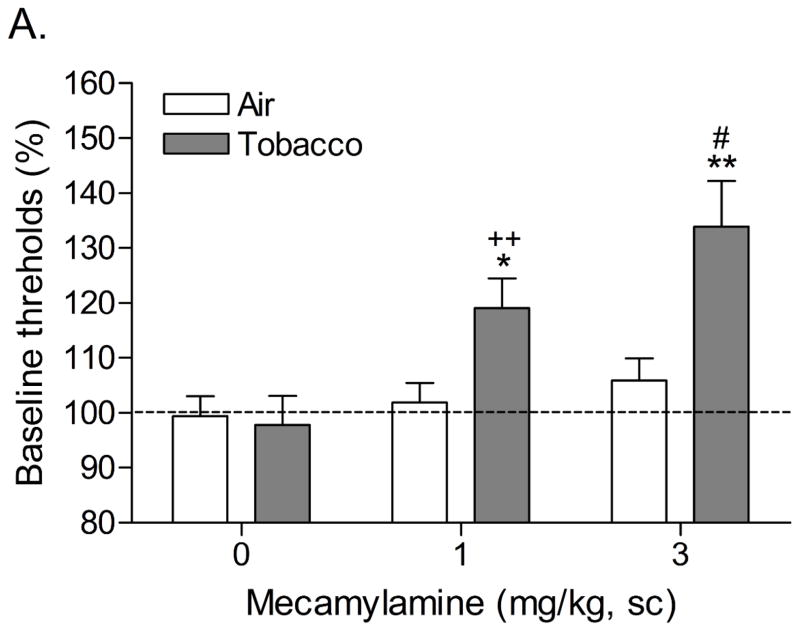Figure 2.
Effect of the nAChR antagonist mecamylamine on the brain reward thresholds (A) and response latencies (B) of rats exposed to tobacco smoke (n=10) and control rats (n=10). In figure 1A, asterisks (* P<0.05, ** P<0.01) indicate elevated brain reward thresholds compared to the corresponding control group. Pound signs (#P<0.05) indicate elevated brain reward thresholds compared to the tobacco smoke group treated with 1 mg/kg of mecamylamine. Plus signs (++ P<0.01) indicate elevated brain reward thresholds compared to the tobacco smoke group treated with vehicle. In figure 1B, asterisks (* P<0.05) indicate increased or decreased response latencies compared to the corresponding control group. Pound signs (#P<0.05) indicate increased latencies compared to the tobacco smoke group treated with 1 mg/kg of mecamylamine. Plus signs (++ P<0.01) indicate increased latencies compared to the tobacco smoke group treated with vehicle.


